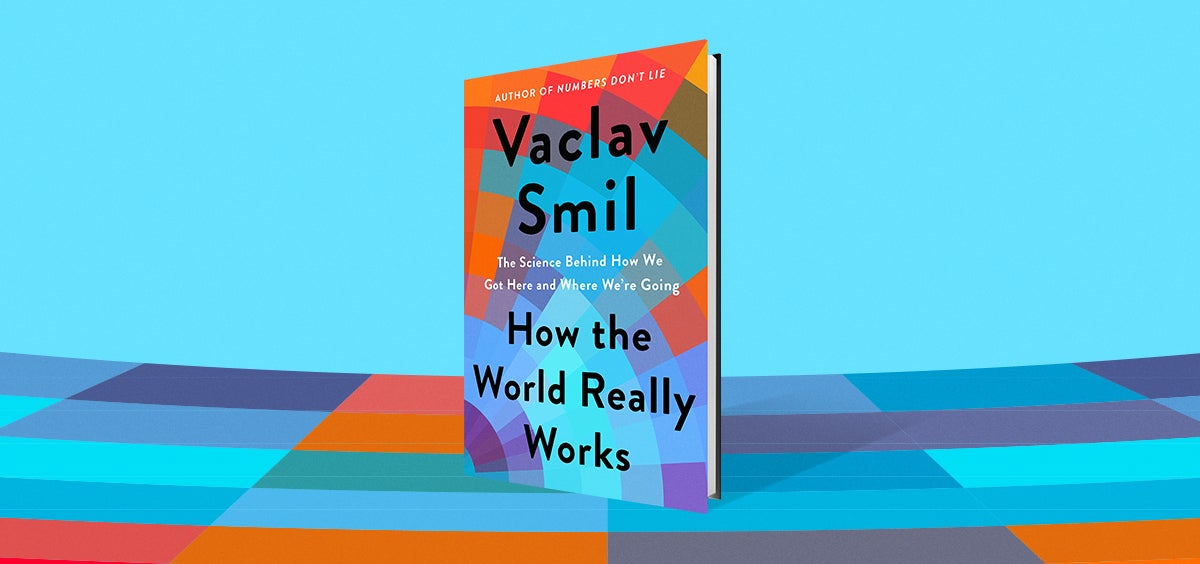Some people refer to clean hydrogen as the Swiss Army Knife of decarbonization because it has so many different potential uses.
I occasionally check the bestseller lists for ideas about what to read next. A few weeks ago I looked at the New York Times’s nonfiction list and got quite a surprise. The latest book by Vaclav Smil, How the World Really Works, was number 8!
I have been a fan of Vaclav’s work for years—he is one of my favorite authors. But his style is not for everyone. Many of his books are dense and packed with data, and it is an understatement to say they have never sold especially well. So as an admirer of Vaclav’s work, I was excited to see his latest one in the top 10 list. The more people who read his books, the better. (I’m sure his new book got a boost from this largely positive review in the New York Times Book Review.)
What I love about How the World Really Works is that it sums up all of the incredible knowledge Vaclav has gained over the years. Most of his 50 books go into great detail about complex subjects including energy, manufacturing, shipping, and agriculture. He wrote an entire book on how diets in Japan have changed.
Because he has gone so deep into such specific topics, he is qualified to step back and write a broad overview for a general audience, which is what he has done with How the World Really Works. If you want a brief but thorough education in numeric thinking about many of the fundamental forces that shape human life, this is the book to read.
Energy is a great example. I have learned more about energy and its impact on society from Vaclav than from any other single source. In 2017 I reviewed his masterpiece Energy and Civilization: A History and wrote that “he goes deep and broad to explain how innovations in humans’ ability to turn energy into heat, light, and motion have been a driving force behind our cultural and economic progress over the past 10,000 years.”
But if you are not up for a long, dense book on the role of energy in human history—Energy and Civilization is 568 pages long and reads like an academic text—you can get the most important ideas by reading the first three chapters of How the World Really Works. They should be required reading for anyone who wants to have an informed opinion on climate change. All Vaclav wants is for people to look at all the areas of emissions—producing electricity, manufacturing, transportation, and so on—and propose realistic, economically viable plans for reducing emissions in each one.
As I wrote in my book on climate change, parts of which drew on Vaclav’s work, I am more optimistic than he is about the opportunity to innovate our way out of a climate disaster. But I highly recommend reading him on the subject because he is so good at explaining how the world’s energy systems work today. Chapter 1, which you can download for free below, is a great example—it covers fuels and the production of electricity.
Another good example of Vaclav’s approach is from the chapter on food. To help you understand the ways in which new sources of energy have allowed humans to grow crops and raise animals more efficiently, he portrays life on three different farms from three eras. He starts with a hypothetical farmer in western New York state in 1801 and explains all the laborious steps required for that person to harvest wheat. Then he skips ahead a century and takes you to eastern North Dakota, showing you all the advances, including plows and harvesters, that made farming far more efficient. Finally he goes to Kansas in 2021 and shows you how things have changed even more dramatically in the past century.
As usual, Vaclav has crunched all the numbers, so he can explain all of this change in both qualitative and quantitative ways. “In two centuries,” he writes, “the human labor to produce a kilogram of American wheat was reduced from 10 minutes to less than two seconds.”
And then he puts that statistic in an even broader context, showing how higher crop yields freed up people to move off of farms and into urban areas where they could collaborate on other innovations. “Most of the admired and undoubtedly remarkable technical advances that have transformed industries, transportation, communication, and everyday living,” he writes, “would have been impossible if more than 80 percent of all people had to remain in the countryside in order to produce their daily bread… or their daily bowl of rice.”
Although Vaclav has strong opinions on many subjects, they are always grounded in facts. And when he weighs in on a huge problem like climate change, he avoids extremes. As he told one interviewer, “What we need is the dull, factually correct and accurate middle. Because only from that middle will come the solutions.”
I disagree with one word in that quote. How the World Really Works is certainly factually correct and accurate, but it is never dull. It is a compelling and highly readable book that leaves readers with the fundamental grounding needed to help solve the world’s toughest challenges.





